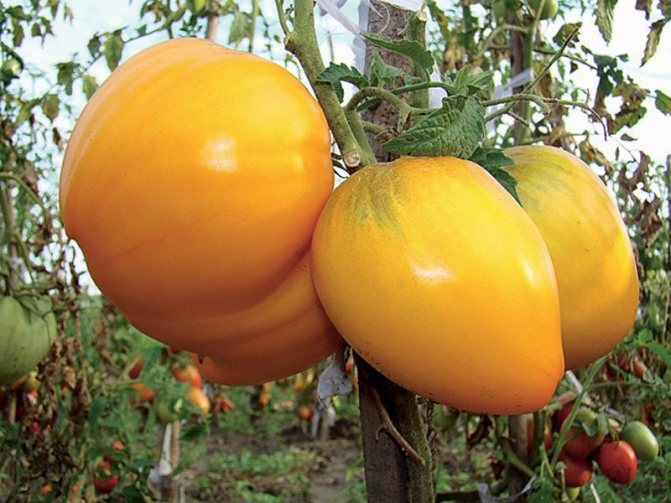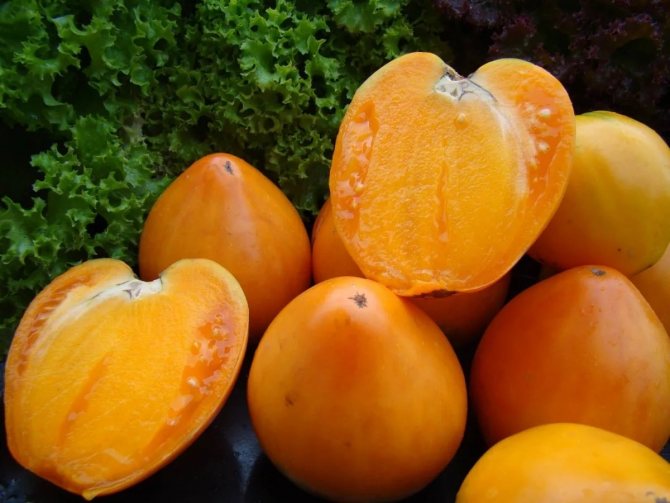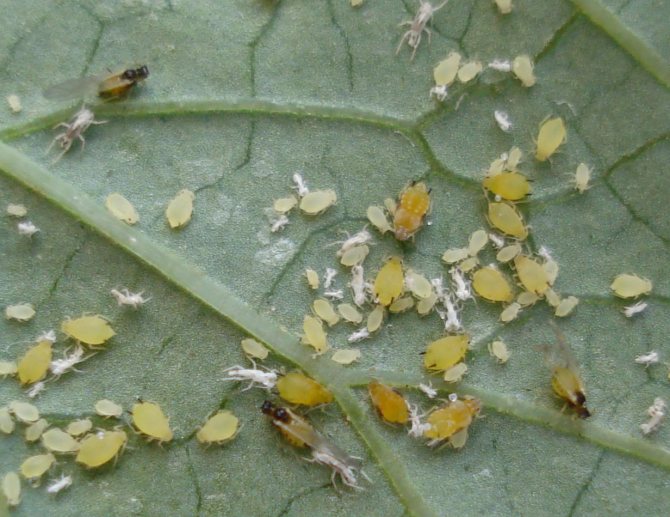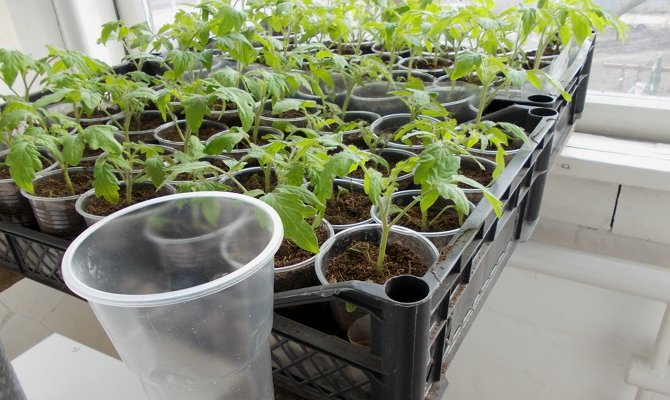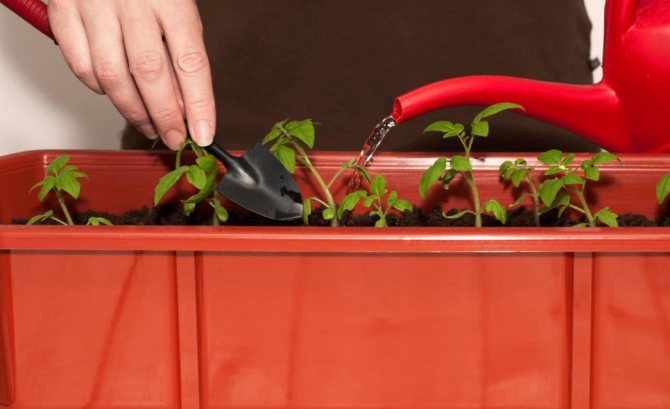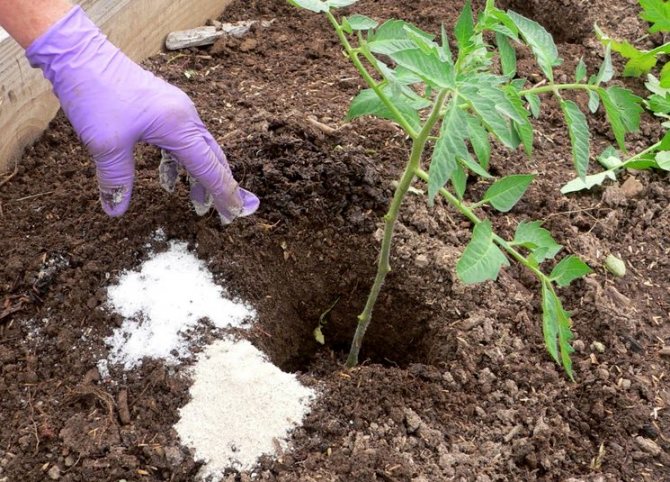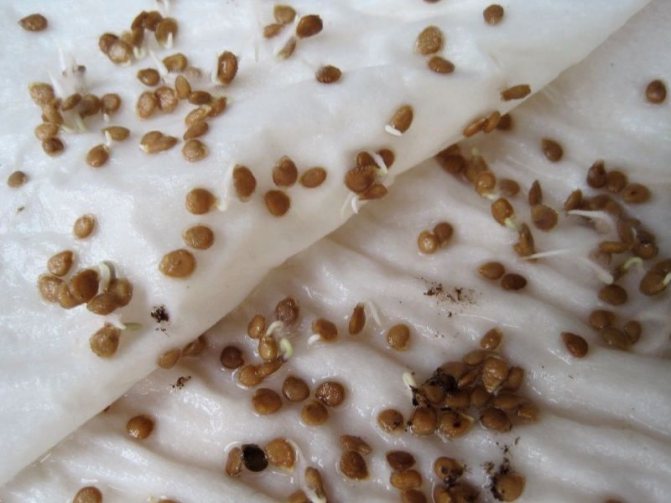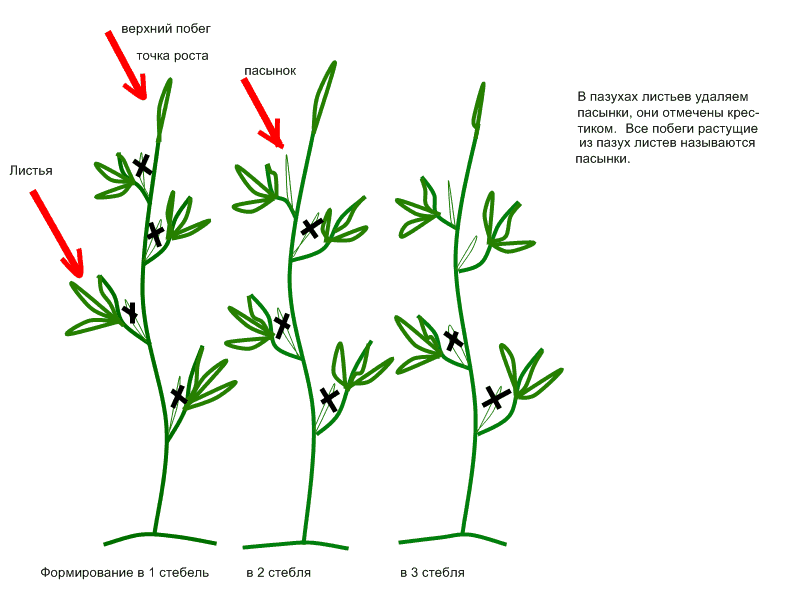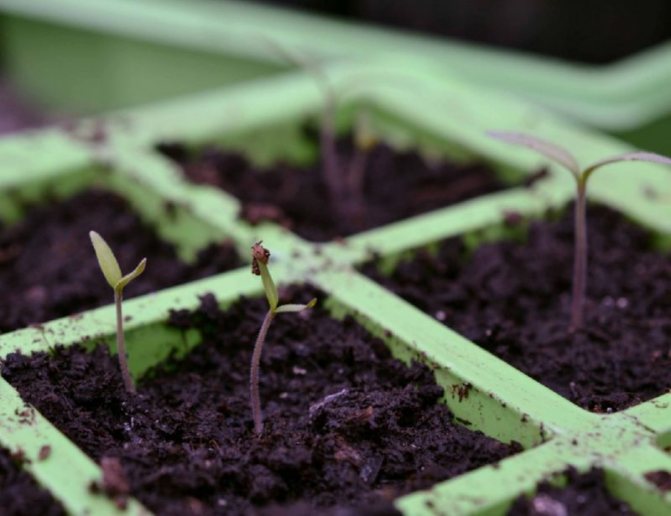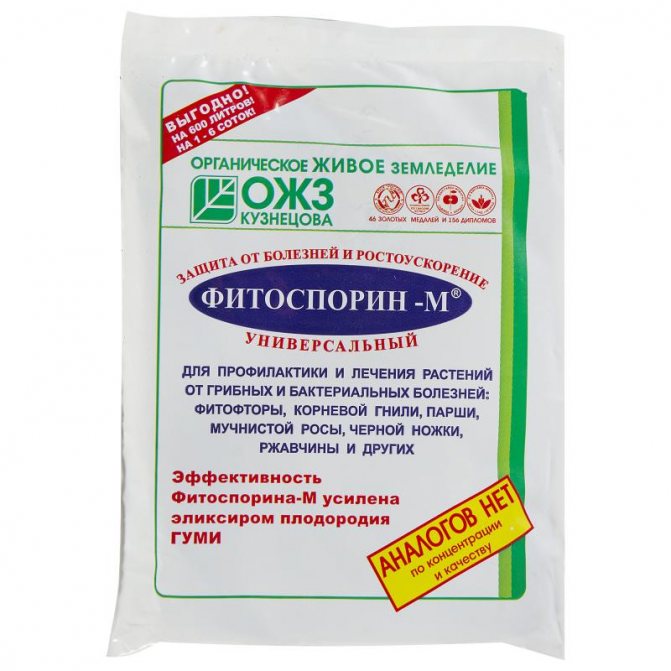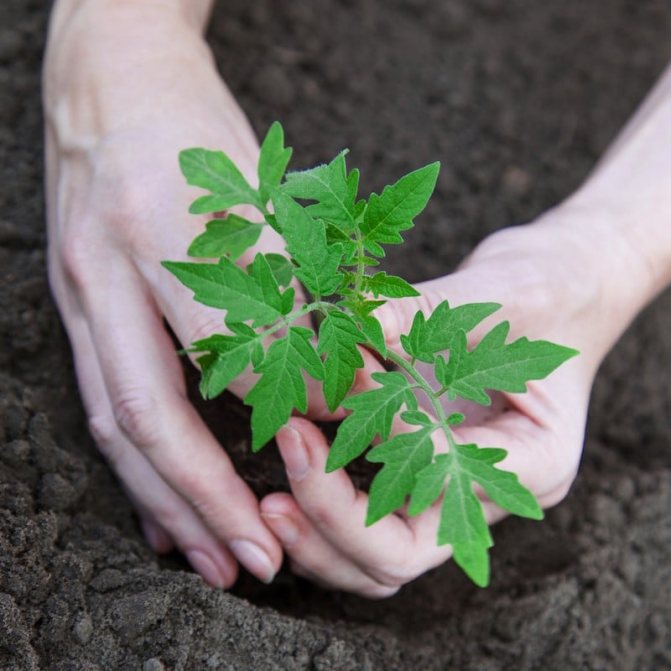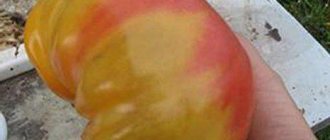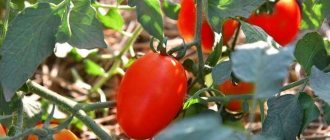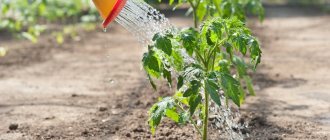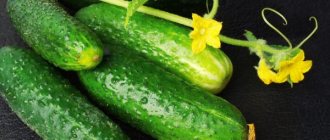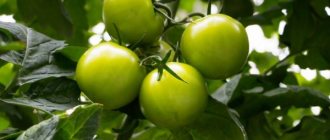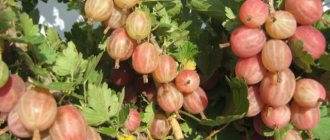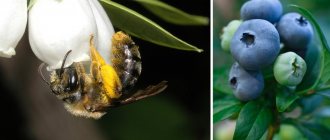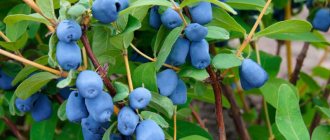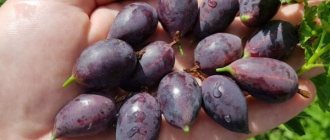If the name "honey" is found in the name of a tomato variety, then the fruit is guaranteed to have a sweet taste. Tomato "Honey Spas" was no exception. The plant is indeterminate, medium-sized. Tomatoes are yellow-orange in color, sweet without acid. The fruits are large, the maximum weight is up to 600 g. The culture of Siberian selection is resistant to weather conditions and diseases.
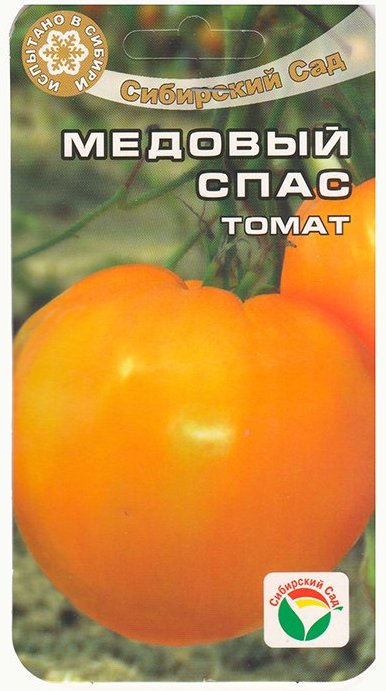
Seeds of the variety offers agro
Description of the variety
Although the tomato variety Honey Spas, created in Novosibirsk, was certified less than 15 years ago, it has already managed to collect a solid collection of positive reviews from gardeners living in different climatic zones.
This original tomato has the following properties:
- is a high-yielding mid-season variety, capable of producing up to 6 kg of tomatoes from one bush;
- belonging to indeterminate plants, he does not limit himself in any way in growth and is able to reach almost two meters in height, if the owner allows him;
- the ripening period of its fruits is 110-115 days;
- has a powerful root system;
- the leaves are light green;
- the shape of the fruit is varied - from heart-shaped to flattened;
- fruit color - honey-orange or radically yellow;
- fruits weigh on average 200 g, but they are able to gain more than half a kilogram weight;
- the pulp is juicy, fleshy, sugary, with a small amount of small seeds;
- the fruits are covered with a dense skin that does not crack during ripening, which facilitates their long-term storage and successful transportation;
- belongs to salad varieties and is unsuitable for canning due to the lack of acid in the fruits and their large size;
- up to 5 full-fledged fruits grow on one flower cluster.
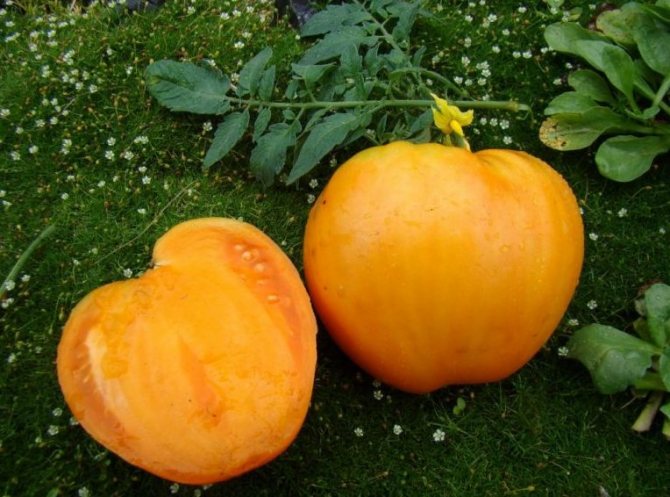

Pests and diseases
Reviews of gardeners indicate that the honey Spas tomato variety is endowed with good disease resistance.
The variety has a particularly high immunity to such diseases:
- tobacco mosaic;
- late blight;
- cancer;
- gray rot;
- powdery mildew;
- bacterial wilting.
But as practice has shown, there is a likelihood of tomato infection from other varieties of vegetable crops. In this regard, it is recommended to inspect the appearance of plants from time to time.
Among the insects that can harm the tomato, it is worth highlighting slugs, Colorado potato beetle larvae and aphids. Therefore, at the first signs of their appearance, it is required to apply biochemical or folk remedies.
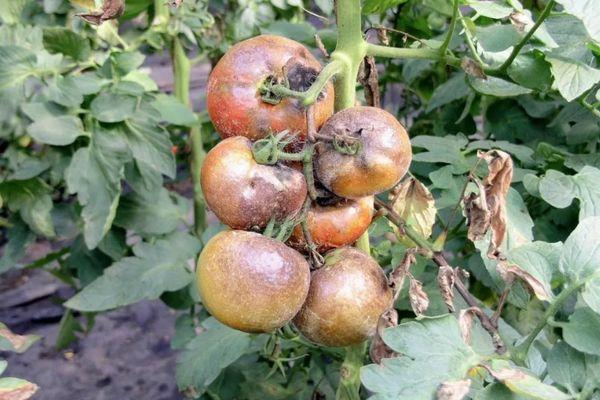

Advantages and disadvantages
- In addition to those positive qualities that have already been mentioned above, Honey Spas is distinguished by the following advantages:
- has pronounced dietary properties, due to which it can be used by people with problems in the gastrointestinal tract and suffering from allergic reactions when eating red tomatoes;
- fruits are able to survive for several months without losing their valuable qualities;
- gives a lot of tomato juice, which has useful qualities and has almost no contraindications;
- able to adapt to different climatic conditions;
- it is resistant to most diseases and pests, from which nightshade crops usually suffer;
- the fruit tastes good.
- The disadvantages, among which there are practically no serious ones, most often include:
- unsuitability for preservation of fruits of this variety;
- high demands on the quality of the soil;
- the need for frequent pinching throughout the growing season;
- inability to grow without tying.
Tomatoes Honey saved on video
If you grew Honey Spas tomatoes, please write whether you like them or not. What was the yield and taste of the fruit in your climatic conditions? How do you rate the resistance of this variety to diseases? Briefly describe the advantages and disadvantages of a tomato. If possible, attach a photo of the entire bush or individual fruits grown by you to the commentary. Thank you!
Your reviews about the Honey Spas tomato and additions to the description will help many gardeners evaluate this variety more objectively and decide whether to plant it or not.
This is a natural tomato variety. Therefore, we recommend taking seeds from a ripe fruit and using them for planting in the following seasons.
Buy tomato seeds Cornabel
Russia Gardens
Hit of the season 2020! A novelty that has shown a stunning result! High yield! Great fruit taste!
Self-cultivation of seedlings
Being a full-fledged variety, not a hybrid, Honey Spas is able to successfully multiply with its own seeds. For this, the seedling method is used.
Sowing dates
Usually the seeds of this variety are planted in order to obtain seedlings in early March. However, depending on climatic conditions, this period can be shifted in one direction or another, if you use the rule that 60 days must pass from the moment of sowing seeds to planting seedlings in open ground.
Did you know? The presence of serotonin in tomatoes, which is also called the "hormone of happiness", allows them to compete in raising the mood of people even with a recognized authority in this regard - chocolate.
The soil
If it is not possible to use the best option in the form of professionally prepared purchased soil, you can prepare the necessary soil with your own hands. To do this, you should:
- Take the land from the garden, prepared in the fall for planting tomato seedlings.
- Mix it in equal proportions with humus or peat with a small addition of sand and wood ash.
- Disinfect the soil with a hot manganese solution or by calcining it in an oven at a temperature of +190 ° C.
- Soak the disinfected soil in an open container in the fresh air for 15 days.
- Planting containers should be disinfected along with the soil.
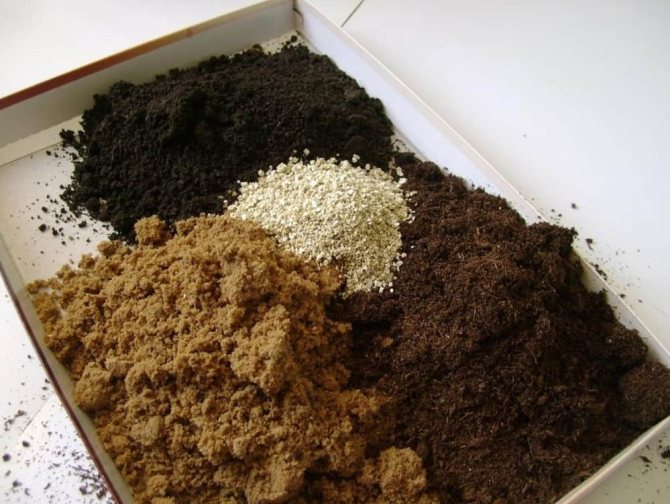

Growing tank
There are several options for containers for soil in which seeds are sown for seedlings:
- plastic glasses;
- peat pots;
- wooden boxes;
- plastic containers;
- peat tablets.
The containers usually do not exceed a height of 0.1 m. In this case, peat pots are used in the event that the picking of seedlings is not provided. And the most in demand today are peat tablets, which are washers of different diameters from pressed peat, enriched with the addition of minerals and growth stimulants. In the upper part of these tablets, a recess is made to place the tomato seed in it.
Did you know? Tomatoes are so loved and popular in the world that festivities are organized in honor of them, museums are opened and even monuments are erected, of which there are already more than a dozen in different countries around the planet.
Seed preparation
Before planting, the seeds are prepared for it as follows:
- Calibration is carried out, as a result of which damaged, rotten and with other defects seeds are removed.
- Selected seeds are dipped in a saline solution, and then the floating empty specimens are removed.
- The full-fledged seed material that has sunk to the bottom is taken out and washed with clean water.
- Then it is treated with a 1% manganese solution for a third of an hour.
- After drying, the seeds are exposed to growth stimulants, which can be successfully replaced with fresh juice extracted from aloe leaves.
- The treated seeds are placed on a constantly moistened gauze at a temperature of +20 ° C until they hatch.
- During this time, they usually manage to harden the seeds up to 5 times in the refrigerator, in which they are placed each time for 10-12 hours.
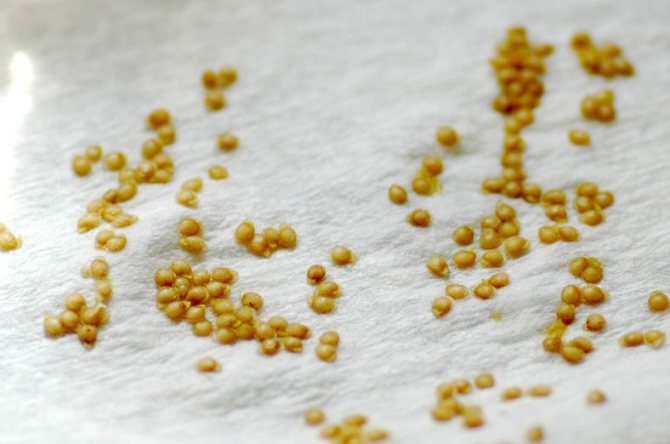

Sowing seeds
The seed is buried into the ground by a maximum of 1.5 cm and sprinkled with crushed peat on top. At the same time, a distance of 3 cm between seedlings is maintained. After sowing, the soil is moistened with a sprayer.
Seedling care
The containers with the sown soil are covered with glass or transparent film to create a greenhouse regime and are left in this form until the first shoots appear. After that, the coating is removed, and the containers are placed in a brightly lit place at a stable temperature of + 24 ° C. During the first two days, the lighting should not be turned off at all, and then daylight hours should last at least 16 hours.
Important! So that the development of the bush is not inhibited, it is recommended to remove the fruits at the stage of blanche ripeness.
After the first 2 leaves appear in the sprouts, the plants dive, planting them in liter pots, trying to grab the largest possible earthen lump around the roots during transplantation and deepening the plant to the cotyledon leaves. Immediately after transplanting, it is necessary to feed the seedlings, for which a mixture of a large spoonful of wood ash and a liter of water is best suited. Watering the seedlings should be actively, without waiting for the topsoil to dry out. However, in this case, in no case should the soil be waterlogged.
Hardening of seedlings
When there is a week left before planting seedlings in a permanent place, the sprouts should be hardened. To begin with, open the windows indoors for a couple of hours, carefully avoiding drafts, which are poorly tolerated by tomatoes. Then the seedlings begin to be taken out into the fresh air, gradually lengthening the time of their stay in the open air. In the last two days before transplanting into open ground, the seedlings are left in the open air for the whole night.
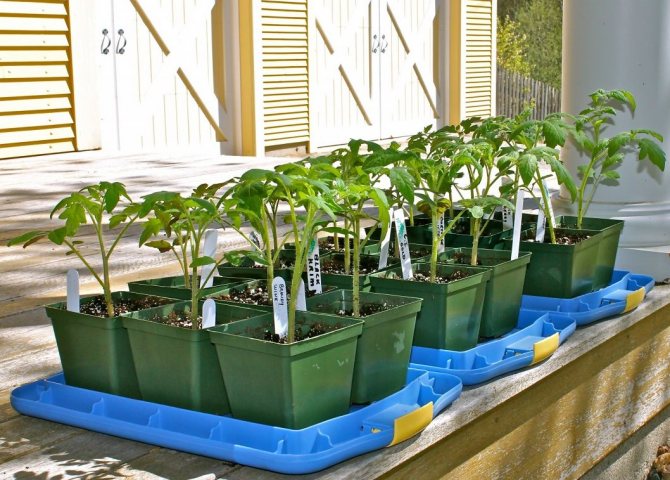

Characteristics of the variety and features of cultivation
Tomato variety "Honey Spas" is intended for cultivation in protected and open ground in all climatic zones of the country. Plants are indeterminate, rather tall. Under summer shelters, they reach a height of 150 cm. Seedlings are planted in a garden bed or greenhouse at the age of 60-65 days. No more than 3 seedlings are placed on a square meter. The bushes require a garter to a support and pinching, it is recommended to form them into two stems with the preservation of the "stepson" located under the first flower brush as a second trunk.
The variety is mid-season: the first tomatoes ripen at 110-115 days from the appearance of full shoots. It is considered not the most productive: in the open field, about 6 kg of tomatoes are removed from a square meter of plantings, however, in the greenhouse there is an opportunity to extend the fruiting period of plants, and then the total weight of the crop harvested from a similar area can reach 13-14 kg.
Gardeners appreciate the variety for the excellent consumer qualities of the fruit. These tomatoes are very beautiful: round or heart-shaped, large (on average about 220 g, but some summer residents received fruits weighing 500 g or more), with a bright orange skin and honey, translucent pulp. Most vegetable growers recognize that the taste of tomatoes deserves the highest praise. They are sweet, mouth-watering, dense on the cut, almost seedless. The fruits of "Honey Spas" are ideal for fresh consumption, as well as for making sauces and juices.
Orange tomatoes generally contain more organic acids than red, raspberry, or pink tomatoes. The Honey Spas variety is an exception to this rule.There is very little acid in the pulp of its fruits, which makes the vegetable suitable for inclusion in the menu of patients suffering from diseases of the digestive system.
In addition, the variety has the following positive qualities:
- unpretentiousness. Plants tolerate temperature and humidity changes well;
- disease resistance. According to gardeners, the variety is relatively rarely affected by late blight, tobacco mosaic virus, as well as gray and apical rot;
- good indicators of transportability and keeping quality of fruits.
Despite the average yield, the variety can be recommended for growing in private gardens, including those summer residents who are just starting to do this exciting business.
Anastasia, 53 years old, Mikhailov
I planted several bushes of the Honey Spas last year. There were no problems, but few fruits were set, and I even decided that I would no longer grow this variety. But I thought so until I tasted ripe tomatoes. This is the most delicious variety that I have come across (at least from the yellow-fruited). Fruits are sweet, fleshy, fragrant - ideal for salads. I will definitely grow: not for quantity, but as a delicacy.
Elena, 41 years old, Balashikha
I have been growing for several years in a row. I really like the density of the pulp and the taste: almost without acidity. My husband has gastritis, he practically does not eat tomatoes. And these ate fresh, and no negative consequences.
With cultivation, everything is simple: the stepson (I form it into two trunks), I tie it up, I water it moderately. If the bushes are not pinched, they bear fruit in the greenhouse until the end of September. True, it is still better to treat them for diseases. The harvest is quite decent: last year I collected almost 5 kg per plant.
Oleg, 37 years old, Krasnodar region
Not the most productive variety, but one of the best for the personal economy, given the quality of the fruit. I have it growing in the open field. It does not require extra care, but in our climate on the hottest days it suffers and needs shading.
I noticed an interesting fact: tomatoes are mature, and those that have been stored for two weeks become especially tasty. It is also easy to transport: the pulp is dense, the skins are strong, do not crack. But a small amount of seeds turned out to be both an advantage and a disadvantage. There are so few of them in each fruit that you cannot always pick up from your tomatoes for planting next year. It's good that the seed of the variety is on sale, and it is inexpensive.
Maria, 26 years old, Istra
"Honey Spas" I grew up in a greenhouse (seeds from the "Siberian Garden"). Fruits were tied well, were not damaged by diseases. The bushes led in 3 stems. The number of brushes was not limited, so the tomatoes turned out to be medium-sized, but fleshy and tasty. Not suitable for pickling. I made several cans, the taste did not seem very expressive. And it's a pity to use such tomatoes in seaming: they are very good fresh in salads.
Collected 4 kilograms per plant. Fruits, unripe in September, ripened indoors. I did not notice any deterioration in taste. The ripe ones lay in a cool place without spoiling for three weeks. I'm happy with the variety, I will plant more.
Read also: Caring for raspberries in autumn in detail on the advice of professionals
We offer for viewing a video on the topic of the article:
Graduated from MGRI them. Ordzhonikidze. His main specialty is a mining engineer-geophysicist, which means a person with an analytical mindset and various interests. I have my own house in the village (respectively, experience in truck farming, gardening, mushroom growing, as well as fiddling with pets and poultry). Freelancer, perfectionist and "bore" in relation to his duties. Hand-made lover, creator of exclusive jewelry made of stones and beads. A passionate admirer of the printed word and an anxious observer of everything that lives and breathes.
Found a bug? Select the text with the mouse and click:
In small Denmark, any piece of land is a very expensive pleasure. Therefore, local gardeners have adapted to growing fresh vegetables in buckets, large bags, foam boxes filled with a special earthen mixture. Such agrotechnical methods allow you to get a harvest even at home.
Both humus and compost are rightfully the basis of organic farming. Their presence in the soil significantly increases the yield and improves the taste of vegetables and fruits. They are very similar in properties and appearance, but they should not be confused. Humus - rotted manure or bird droppings. Compost - rotted organic residues of various origins (spoiled food from the kitchen, tops, weeds, thin twigs). Humus is considered a better fertilizer, compost is more readily available.
The homeland of pepper is America, but the main breeding work on the development of sweet varieties was carried out, in particular, by Ferenc Horvat (Hungary) in the 20s. XX century in Europe, mainly in the Balkans. Pepper came to Russia from Bulgaria, therefore it got its usual name - "Bulgarian".
Tomatoes have no natural protection against late blight. If late blight attacks, any tomatoes (and potatoes too) die, no matter what is said in the description of varieties ("varieties resistant to late blight" is just a marketing ploy).
It is necessary to collect medicinal flowers and inflorescences at the very beginning of the flowering period, when the content of nutrients in them is as high as possible. Flowers are supposed to be picked with hands, breaking off rough pedicels. The collected flowers and herbs are dried, scattered in a thin layer, in a cool room at a natural temperature without access to direct sunlight.
One of the most convenient methods to prepare a grown crop of vegetables, fruits and berries is freezing. Some people believe that freezing leads to a loss of the nutritional and beneficial properties of plant foods. As a result of the research, scientists have found that there is practically no decrease in nutritional value when frozen.
From varietal tomatoes you can get "your" seeds for sowing next year (if you really like the variety). And it is useless to do it with hybrid ones: the seeds will work out, but they will carry the hereditary material not of the plant from which they were taken, but of its numerous “ancestors”.
Humus - rotted manure or bird droppings. It is prepared like this: manure is piled in a heap or pile, sandwiched with sawdust, peat and garden soil. The collar is covered with a film to stabilize the temperature and humidity (this is necessary to increase the activity of microorganisms). The fertilizer "ripens" within 2-5 years - depending on external conditions and the composition of the feedstock. The output is a loose homogeneous mass with a pleasant smell of fresh earth.
The novelty of American developers is the Tertill robot, which weeds in the garden. The device was invented under the guidance of John Downes (the creator of the robot vacuum cleaner) and works autonomously in all weather conditions, moving on uneven surfaces on wheels. In doing so, he cuts all plants below 3 cm with the built-in trimmer.
Planting seedlings to a permanent place
This moment is determined by two factors:
- the air and soil in the open air should warm up steadily;
- from the moment of sowing the seeds, 60 days must pass.
Typically, this time in different regions falls in mid-May-early June. For the beds, which are prepared in the fall, they choose elevated places, protected from the active movement of air masses.
- The best predecessors of tomatoes are:
- cucumbers;
- beet;
- carrot;
- cabbage;
- onion;
- legumes.
We recommend that you find out why tomatoes do not turn red in the greenhouse.
- But it is highly discouraged to plant tomato seedlings on the soil after growing on it:
- eggplant;
- potatoes;
- tobacco;
- pepper.
Nor can you plant tomatoes after tomatoes until 3 years have passed. It is necessary to plant plants in such a way that 1 sq. m they fit no more than three. At the same time, the depth of the holes, previously treated with a weak manganese solution and enriched with two tablespoons of potassium and phosphorus fertilizers, is determined by the need to deepen the earthen coma with the root system to such an extent that the earth poured on top of it reaches the lower leaves of the seedlings. Tomatoes transplanted to a permanent place require immediate watering with warm water.
Outdoor care
Seedlings of the Honey Spas, planted in open ground, require subsequent care in the form of:
- glaze;
- top dressing;
- pinching;
- garters.
Find out how often and how to properly water the tomatoes in the greenhouse.
Watering
After watering with warm water, immediately after transplanting, the seedlings are then watered the next time a week later. It should be borne in mind that the Honey Spas variety does not tolerate stagnant water, therefore it is necessary to water it, focusing on the degree of drying of the topsoil under the bush.
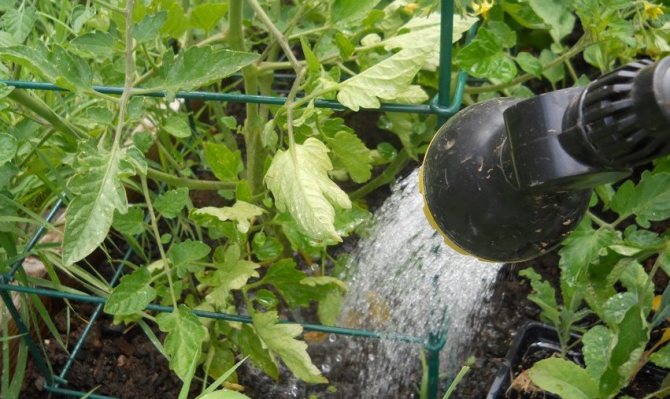

In addition, watering with cold tap water using a hose is highly undesirable. Rainwater collected in barrels and heated under the sun is ideal for irrigation. It should be poured exclusively under the bush, avoiding water drops on the leaves.
Fertilization
At the beginning of the growing season, when the plant grows and gains green mass, it really needs nitrogen, which is abundant in organic fertilizers, be it cow dung or bird droppings. These fertilizers are in liquid form and are delivered under the tomato bushes. And when fruits begin to develop from the ovaries, then proceeding to ripening, the need of a tomato bush for phosphorus, potassium and iodine increases, which is most often satisfied with extracts from superphosphate with the addition of ash and a few drops of iodine.
The Honey Spas variety, which responds well to feeding, responds best to professionally prepared, purchased, balanced complex fertilizers containing, in addition to potassium and phosphorus, minerals in the form of:
- magnesium;
- boron;
- zinc;
- manganese.
Tomato care
This variety does not require any exquisite care for the bushes. He, like all tomatoes, requires watering, garter, loosening, weeding, feeding and protection from pests.
- Garter. Tomatoes are tied up immediately after planting from the seed cups to the greenhouse or soil.
- Watering. Irrigation is best done in the morning, once a week. If the air temperature is very high (mid-summer), more frequent watering may be required. In cold, damp weather, water less often.
- After watering, when the moisture goes a little into the soil and evaporates, you need to loosen the ground under the bushes well. Loosening should be done carefully, taking care not to damage the roots. In the process of loosening, you need to immediately remove the weeds.
- Grasshopping is the cutting of additional shoots that appear in the leaf axils. Stepson needs to be cut often - they grow quickly.
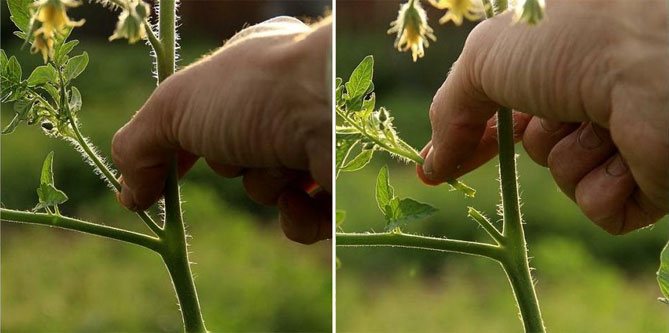

- 10 days after planting tomato seedlings, the plants can be fed with organic matter. After 2 weeks, feeding should be repeated.
Harvesting
Collecting tomatoes begins 110 days after sowing seeds in the ground. Due to the dense skin, the fruits are resistant to mechanical stress and perfectly tolerate transportation. In addition, they have good keeping quality. Plucked green, they can be stored until the New Year. In addition, they have a remarkable ability to ripen in the light in a warm environment.
You will be interested in learning how to properly store tomatoes at home.
This variety of tomatoes with a non-standard color in a relatively short time managed to attract the attention of vegetable growers in their summer cottages and rural farmsteads with their high taste, dietary properties and ability to adapt to various climatic conditions.
Fruit characteristics
The variety itself is large-fruited - the weight of tomatoes can float from 200 to 600 grams, depending on the care and climatic zone. They can be round, kidney-shaped, or heart-shaped in shape. Important! In the description of the variety in the register, it is indicated that the tomatoes must be round. This is not true, any of these forms are normal for the Honey Savior.
Unripe fruits are green, near the stalk it becomes almost emerald green. Ripe tomatoes of a rich yellow color, which resemble some types of honey - apparently because of this the variety got its name.
The variety tastes very good, it has a lot of sweetness and almost no acid, which is what yellow tomatoes often "suffer" from.

